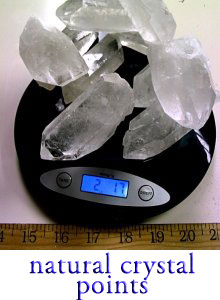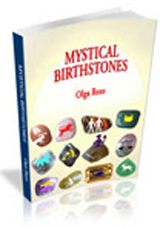
| |
Sunstone gemstone  | |  Emerald stone Emerald stone  | |  Rutile quartz Rutile quartz  | |  Topaz crystal Topaz crystal  | |  Hematite stones Hematite stones  | |  Sapphire stones Sapphire stones  | |  Fluorite crystal Fluorite crystal  | |  Diamonds meaning Diamonds meaning  | |  Vogel crystal Vogel crystal  | |  Blue lace agate Blue lace agate  | |  Jade gem stone Jade gem stone  | |  Orthoclase Orthoclase  | |  Lepidolite properties Lepidolite properties  | |  Sattuckite properties Sattuckite properties  | |  Citrine Citrine  | |  Aquamarine Aquamarine  | |  Rose quartz Rose quartz  | |  Amethyst Amethyst  | |  Fire opal Fire opal  | |  Obsidian Obsidian
 | |  Prehnite Prehnite  | |  Opal Opal  | |  Kunzite Kunzite
 | |  Thulite Thulite  | |  Tourmaline Tourmaline  | |  Amazonite Amazonite  | |  Petalite Petalite  | |  Tektite | Tektite |  Pietersite | Pietersite |  Ruby | Ruby |  | |  Chrysoprase | Chrysoprase | 
|
The Composition of Quartz
Quartz crystals are probably the best known types of minerals to everyone... If you have not seen one, you probably are not from this planet (just kidding). As a matter of fact, let me ask you a question: Have you ever imagined a macroscopic crystal without having the picture of rock crystal quartz in your mind? Because, I haven't. Those quartz points or singly terminated sticks can be impressive both in their size and in their beauty. These wondrous quartz specimens can be probably considered as prototypes of macroscopic crystal grains. At least this is my interpretation... Those crystals found in quartz rocks are exactly the kind visible with naked eyes. Many crystalline grains in so many micro-crystalline materials are (sadly enough) invisible.

The Great Class of Silicate Minerals
Let us first see what the definition of quartz is. In short, QUARTZ=SILICA.
Because, quartz is nothing but silica, we are talking about a type of
mineral with chemical composition -- SiO2 ... So if you have
looked for a simple straightforward answer, here it is: Quartz is made of Silicon Si and oxygen O. But not
everything is so simple... Follow on... I would like to make a digression
here, but at the end we will have, I hope, better knowledge about what
quartz is. Let us go one step above and take a look at the great class of
silicate materials. Quartz or silica, is just one member of the silicate minerals. Silicate minerals contain
tetrahedral units of the so-called silicate SiO4 group. Along with it they also
contain other elements and groups, this is the group they share in common.
Tetrahedral means that silicon Si is placed in the center of a microscopic
pyramid, and that the 4 oxygen atoms are located in the corners of this
pyramid. Something like this:
 This tetrahedral coordination is basis of all silicates.
Even though the formula of quartz is SiO2, in space we have this SiO4
arrangement. If you took any member of this vast group, you would find it
there. The only thing that makes each of the silicate types stand out with
respect of each other is how two or more of these SiO4 groups
combine themselves in a regular fashion in 3D as to produce the whole bulky
material. Let me give you an example. Let us suppose that these groups
stand on their own ... that every single one of them does not like the
presence of another microscopic pyramid near by... we would get the subgroup of Nesosilicates. There will be some gems, ... interesting
gems, in this subclass of silicate minerals, for instance, peridot or
topaz. If two of these silicate groups merged together, guess what, we
would end up with a single combined Si2O7 unit, and
the corresponding silicate mineral will belong to the Sorosilicates.
You will get the more or less known epidote stone there. I hope you are
still following... Now, if these microscopic pyramids joined together in a
complex 3D frameworks, there we would have the class of Tektosilicates. This class is important for us,
since quartz and thus rock crystal belong there. Therefore in quartz, we
would see many of the microscopic tetrahedral units arranged together in
such a 3-dimensional pattern as to build complex grids in space. In silica,
that is quartz, apart from the silicate SiO4 units, there is nothing else
(except for trace elements and impurities) present. In another post we will
discuss in detail the unit cell of quartz and some very interesting
implications ... now I let us go back where we started and consider only
quartz.
This tetrahedral coordination is basis of all silicates.
Even though the formula of quartz is SiO2, in space we have this SiO4
arrangement. If you took any member of this vast group, you would find it
there. The only thing that makes each of the silicate types stand out with
respect of each other is how two or more of these SiO4 groups
combine themselves in a regular fashion in 3D as to produce the whole bulky
material. Let me give you an example. Let us suppose that these groups
stand on their own ... that every single one of them does not like the
presence of another microscopic pyramid near by... we would get the subgroup of Nesosilicates. There will be some gems, ... interesting
gems, in this subclass of silicate minerals, for instance, peridot or
topaz. If two of these silicate groups merged together, guess what, we
would end up with a single combined Si2O7 unit, and
the corresponding silicate mineral will belong to the Sorosilicates.
You will get the more or less known epidote stone there. I hope you are
still following... Now, if these microscopic pyramids joined together in a
complex 3D frameworks, there we would have the class of Tektosilicates. This class is important for us,
since quartz and thus rock crystal belong there. Therefore in quartz, we
would see many of the microscopic tetrahedral units arranged together in
such a 3-dimensional pattern as to build complex grids in space. In silica,
that is quartz, apart from the silicate SiO4 units, there is nothing else
(except for trace elements and impurities) present. In another post we will
discuss in detail the unit cell of quartz and some very interesting
implications ... now I let us go back where we started and consider only
quartz.
Microcrystalline and Macrocrystalline Quartz
This is important! This is crucial in order to properly
understand the division which is so often emphasized as basis of the
division into families or subgroups of quartz ... but sometimes not fully
understood. In any crystalline material, we can distinguish crystal grains. The crystal grains are usually microscopic
portions of that material where the crystal structure is extended in a
regular fashion following a predefined pattern... It might sound too
complicated but it is really simple... The area where the regular pattern
of repetition is affected is usually where another of these crystal grain
or crystallites begins. If these grains are so large that are visible with
naked eye ... you might have guessed already ... we get the macrocrystalline quartz. Here we have the following crystals:
Rock crystal, Rose quartz, Citrine, Amethyst, Smoky Quartz, Rutilated
Quartz, Tiger Eye...
have I forgotten some? It is not so difficult to convince ourselves that
these crystals are macroscopic. Take a look at the following photo:) I hope
you are able to spot a number of individual macroscopic grains. We usually
call them crystals, which is what they indeed are ![]() single-crystals of
silica. If the grains are small and cannot be seen even under moderate
magnification, we speak of microcrystalline or cryptocrystalline quartz. Here we the following
quartz stones:
Agate, Jasper, Aventurine, Blood stone, Chalcedony, Sard, Onyx,
Carnelian, Chrysoprase, etc...
I cannot remember at the moment of the rest of them, but Hey, if you have a
clue, please comment bellow.
single-crystals of
silica. If the grains are small and cannot be seen even under moderate
magnification, we speak of microcrystalline or cryptocrystalline quartz. Here we the following
quartz stones:
Agate, Jasper, Aventurine, Blood stone, Chalcedony, Sard, Onyx,
Carnelian, Chrysoprase, etc...
I cannot remember at the moment of the rest of them, but Hey, if you have a
clue, please comment bellow.
Final notes on Quartz Structure
- I hope you were able to remember that quartz is made of silicon and oxygen, both combined in silica, with chemical formula SiO2, but with space arrangement of SiO4 units.
- The mineral of which quartz is made is called silica, with the above composition SiO2.
- I hope I was able to give some hints as to what quartz is and how it can be further divided into two subgroups based on its visible or invisible crystal structure (macro ... and ... micro... ).
- I have also tried to point out that there is a larger group than that of quart, namely, the Tektosilicates, and further apart, the Silicate Minerals.
- Finally, I hope you have understood that the name rock crystal can be used for the transparent (clear) macroscopic, macro crystalline quartz. Many other quartz variations have other names.
(Photo credits: http://arapaho.nsuok.edu )
Tags:
macrocrystalline quartz, microcrystalline quartz, quartz composition,
quartz structure, rock crystal, silica quartz, Silicate minerals,
Tektosilicates
Comments:
Gregg S. Pennington says:
06-23-2021
6/21/2021. More of a question. What tools would be required to shape quartz blocks or blanks into
elaborate or complex shapes ? From skulls to anything else ? How would our more ancient societies have handled such tasks ? Thanks, Gregg.
sunnyray says:
06-23-2021
Hi Gregg. That's a good question, becaues the ancient societies couldn't have had sophisticated tools like cutting machines based on diamond. So I don't
think we can know for sure. My best guess is some kind of material manipulation without using brute force.




























